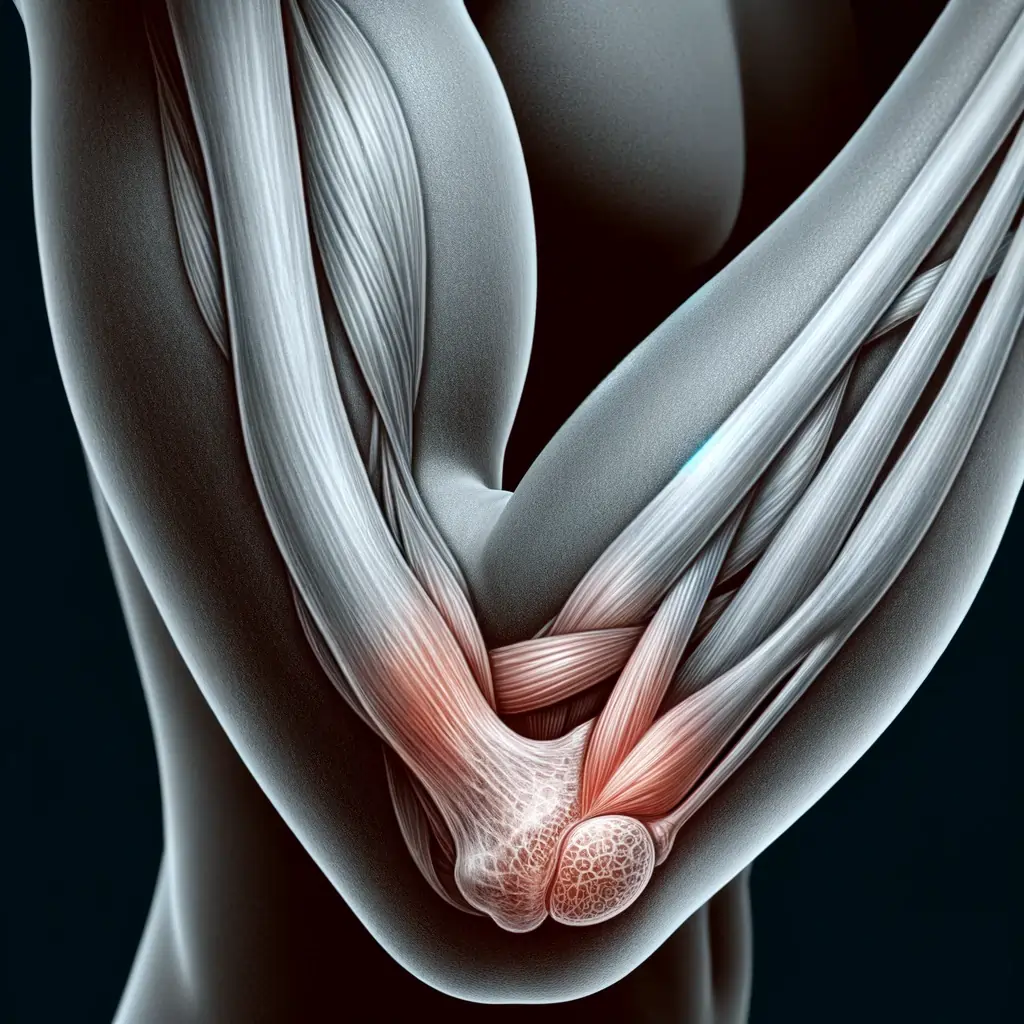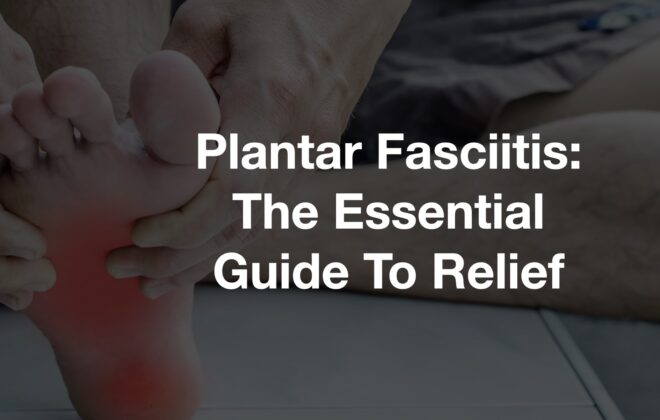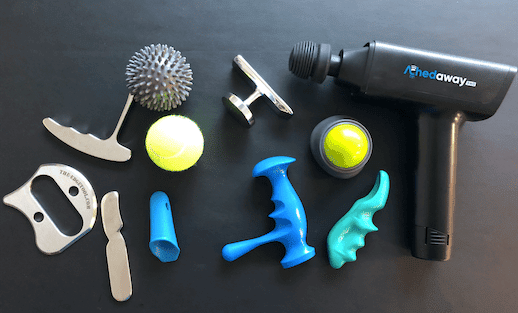Tennis Elbow Trigger Points | Locate And Self Treat
If you’re experiencing elbow pain that interferes with your daily activities, understanding and self-treating these trigger points can help alleviate discomfort and improve your quality of life.
Trigger points are hyperirritable knots in the muscles that can generate pain locally or refer it to other areas. In the case of tennis elbow, these trigger points often develop in the muscles of the forearm and contribute to the pain experienced in the elbow.
In this article, we will provide a comprehensive overview of tennis elbow trigger points and how to identify and self-treat them. By locating these trigger points and employing effective techniques, you can reduce pain and regain functionality without relying solely on professional intervention.
To enhance your understanding of tennis elbow trigger points and their impact, we will also explore the underlying causes of tennis elbow and how repetitive activities and muscle overuse can lead to this condition.

No one knows your body better than you do, and learning how to identify your specific tennis elbow trigger points is crucial. We will discuss the symptoms and signs of tennis elbow and provide simple tests for self-diagnosis. You’ll also discover techniques for locating trigger points in the forearm muscles and distinguishing them from other types of elbow pain.
To effectively relieve pain caused by tennis elbow trigger points, self-treatment is key. In this article, we will guide you through various self-treatment options, including self-massage and trigger point therapy, that can be easily performed in the comfort of your own home.
We understand that each person is unique and may benefit from complementary treatments and preventive strategies. We will dive into the importance of neuromuscular massage therapy, recommend specific exercises and stretches to aid recovery, discuss reducing activities that aggravate the condition, and explore lifestyle changes that can contribute to long-term improvement.
In conclusion, by equipping yourself with the knowledge of tennis elbow trigger points and understanding how to locate and self-treat them, you can take control of your pain management journey. Remember, self-treatment does have its limitations, so knowing when it’s appropriate to seek professional help is equally important.
Key Takeaways:
- Locating and self-treating tennis elbow trigger points can alleviate elbow pain and improve daily activities.
- Trigger points are knots in the muscles that can refer pain to the elbow.
- Repetitive activities and muscle overuse can lead to tennis elbow.
- Identify tennis elbow trigger points through symptoms, self-diagnosis tests, and locating them in forearm muscles.
- Relieve pain through self-treatment techniques like self-massage and trigger point therapy.
Understanding Tennis Elbow and Trigger Points

In this section, we will provide an overview of tennis elbow and its association with trigger points. We will define tennis elbow, also known as lateral epicondylitis, and explain the role that trigger points play in causing elbow pain. Additionally, we will explore how repetitive activities and muscle overuse can lead to injury.
What is Tennis Elbow (Lateral Epicondylitis)?
Tennis elbow, or lateral epicondylitis, is a condition characterized by pain and inflammation on the outer part of the elbow. It is a common injury that affects both athletes and individuals performing repetitive motions or activities using their forearms and wrists. Despite its name, tennis elbow can occur in anyone, not just tennis players.
Defining Trigger Points and Their Role in Elbow Pain
Trigger points are tender areas within a muscle that can cause pain locally or refer pain to other areas of the body. In the case of tennis elbow, trigger points in the forearm muscles, such as the extensor carpi radialis brevis, can contribute to elbow pain. These trigger points may develop due to muscle overuse, trauma, or poor ergonomics.
How Repetitive Activities and Muscle Overuse Lead to Injury
Tennis elbow often develops as a result of repetitive activities that involve gripping, twisting, or lifting. These activities can lead to muscle overuse and strain on the tendons that attach to the lateral epicondyle of the elbow. Over time, this repetitive stress can cause microtears in the tendons and result in inflammation, pain, and limited range of motion.
| Tennis Elbow | Trigger Points | Elbow Pain | Muscle Overuse | Injury |
|---|---|---|---|---|
| Common condition affecting the outer part of the elbow | Tender areas within the muscle that contribute to pain | Pain experienced in the elbow | Repetitive activities leading to excessive muscle use | Tissue damage resulting from continuous strain |
Identifying Your Tennis Elbow Trigger Points
Symptoms and Signs of Tennis Elbow
Recognizing the symptoms and signs of tennis elbow is crucial for identifying the presence of trigger points. Common symptoms include:
- Elbow pain that radiates from the outside of the elbow to the forearm and wrist
- Pain when lifting, gripping, or twisting objects
- Weakened grip strength
- Tenderness or swelling around the elbow
If you experience these symptoms, it is important to consider the possibility of tennis elbow trigger points.
Simple Tests for Self-Diagnosis
You can perform simple tests to self-diagnose tennis elbow and determine if trigger points are contributing to your discomfort:
- Wrist extension test: Extend your wrist and fingers while resisting pressure applied by someone else. If you experience pain on the outside of the elbow during this test, trigger points may be present.
- Finger test: Press on the tendons located on the outside of your elbow while flexing and extending your fingers. If you feel pain in the elbow, trigger points could be the cause.
These tests can help you identify the presence of tennis elbow and trigger points, but it is always recommended to consult a healthcare professional for an accurate diagnosis.
Locating Trigger Points in Forearm Muscles
Once you suspect the presence of trigger points in your forearm muscles, it is essential to locate them for effective self-treatment. Here are steps to help you locate trigger points:
- Identify the tender areas on the outside of your forearm, near the elbow.
- Apply gentle pressure with your fingertips to these areas to find the specific points that elicit pain.
- Trigger points often feel like small knots or tight bands of muscle tissue.
By pinpointing these trigger points, you can target them during self-treatment to alleviate discomfort and promote healing.
Referred Pain: Distinguishing Trigger Points From Elbow Pain
It is important to distinguish between pain caused by trigger points and pain originating from other factors in the elbow. Referred pain can often mimic the symptoms of tennis elbow, leading to misdiagnosis. Here are some key differences:
| Trigger Point Pain | Elbow Pain |
|---|---|
| Pain is concentrated in specific areas of the forearm. | Pain is felt directly in the elbow joint. |
| Pain can be reproduced or intensified by palpating specific trigger points. | Pain may worsen with specific movements or activities that stress the elbow joint. |
| Massage or pressure on trigger points may provide relief. | Massage or pressure on the elbow may not alleviate pain. |
Understanding and distinguishing the source of pain is crucial for effective self-treatment. If you suspect trigger points are contributing to your elbow pain, target these areas for relief. However, if the pain persists or worsens, consult a healthcare professional for further evaluation and guidance.
Tennis Elbow Trigger Points | How To Relieve Pain Through Self-Treatment
In this section, we will explore effective self-treatment options for relieving pain caused by tennis elbow trigger points. Self-massage and trigger point therapy can be highly beneficial techniques that you can easily perform at home to alleviate discomfort and promote healing.
Self-massage is a simple yet powerful technique that targets the specific trigger points in your forearm muscles. By applying pressure to these trigger points, you can help release tension and reduce pain. Using your fingers or a massage ball, gently apply pressure to the trigger points in a circular motion for a few minutes each day. This can help increase blood flow, relax the muscles, and provide relief from tennis elbow pain.
Trigger point therapy involves identifying and applying pressure to trigger points in your forearm muscles. You can use your fingers or a tool like a foam roller or a tennis ball to apply direct pressure to these points. By doing so, you can release the tight knots and alleviate pain associated with tennis elbow. It’s important to focus on each trigger point and apply pressure for a few seconds, gradually increasing the intensity as tolerated.
In addition to self-massage and trigger point therapy, incorporating specific exercises and stretches into your routine can help strengthen the affected muscles and improve flexibility. The following exercises and stretches can aid in the recovery process:
- Forearm extensor stretch: Extend your arm in front of you, palm facing down. With your opposite hand, gently bend your wrist downward until you feel a stretch in your forearm. Hold this stretch for 30 seconds and repeat on both arms.
- Wrist curls: Hold a lightweight dumbbell or a resistance band in your hand, palm facing up. Rest your forearm on a table or your thigh, allowing your wrist to hang over the edge. Slowly curl your wrist up towards your body and then back down, focusing on the movement in your forearm muscles. Perform 3 sets of 10-15 repetitions on each arm.
- Reverse wrist curls: Similar to wrist curls, but with your palm facing down. Perform 3 sets of 10-15 repetitions on each arm.
It’s also important to identify and avoid activities that aggravate your tennis elbow. Repetitive motions, such as excessive typing or gripping tools too tightly, can worsen the condition. By reducing or modifying these activities, you can provide your elbow with the rest it needs to heal.
Remember, self-treatment for tennis elbow trigger points should only be a part of your overall management plan. If your symptoms persist or worsen despite self-treatment, it’s advisable to seek professional help from a healthcare provider or a licensed massage therapist who specializes in neuromuscular massage therapy. They can provide a more comprehensive assessment and recommend personalized treatment options to address your specific needs.
| Self-Treatment Techniques | Benefits |
|---|---|
| Self-massage | Relieves muscle tension, improves blood flow, and reduces pain |
| Trigger point therapy | Targets specific trigger points, releases muscle knots, and alleviates pain |
| Exercises and stretches | Strengthens muscles, improves flexibility, and aids in the recovery process |
Complementary Treatments and Preventive Strategies for Tennis Elbow
In addition to self-treatment techniques, there are several complementary treatments and preventive strategies that can help manage tennis elbow and promote long-term recovery. These approaches can complement the self-care measures discussed earlier and provide additional relief from pain and discomfort.
Importance of Neuromuscular Massage Therapy
One effective complementary treatment for tennis elbow is neuromuscular massage therapy. This specialized form of massage targets the trigger points and tight muscles associated with tennis elbow. The therapist applies pressure to these areas, promoting relaxation and relieving tension in the muscles and tendons surrounding the elbow. Neuromuscular massage therapy can help reduce pain, improve blood circulation, and enhance the healing process.
Exercises and Stretches to Aid Recovery
Engaging in specific exercises and stretches can also aid in the recovery of tennis elbow. These exercises help strengthen the muscles and tendons in the forearm, reducing the strain on the elbow. Some beneficial exercises include wrist curls, forearm pronation and supination, and eccentric exercises. Stretching exercises, such as wrist flexor and extensor stretches, can improve flexibility and relieve tension in the affected area.
Reducing Aggravating Activities
Another important aspect of managing tennis elbow is identifying and reducing activities that aggravate the condition. It is essential to avoid or modify activities that put excessive strain on the forearm muscles and tendons, worsening the symptoms. This may include adjusting the grip on sports equipment, using ergonomic tools, maintaining proper form during physical activities, and taking regular breaks to rest the affected arm.
Lifestyle Changes for Long-Term Improvement
Implementing certain lifestyle changes can contribute to long-term improvement in tennis elbow. These changes may include maintaining a healthy weight to minimize stress on the joints, practicing proper posture to reduce strain on the arms and shoulders, and adopting ergonomic workstations and tools to minimize repetitive stress injuries. Additionally, incorporating stress management techniques and adequate rest into your daily routine can help support the healing process and prevent further aggravation of the condition.
Conclusion
In conclusion, self-treatment techniques can be highly effective in managing tennis elbow and alleviating discomfort caused by trigger points. By regularly performing self-massage and trigger point therapy, you can target specific areas of tension and promote healing in the affected muscles.
However, it is essential to know when it’s time to seek professional help. If your symptoms persist or worsen despite self-treatment efforts, it’s crucial to consult a healthcare professional specializing in sports medicine or physical therapy. They can provide a more comprehensive evaluation of your condition and offer additional treatment options tailored to your specific needs.
Alongside self-treatment, complementary approaches such as neuromuscular massage therapy can further enhance your recovery from tennis elbow. This specialized massage technique focuses on releasing tension in the muscles, improving circulation, and reducing pain and inflammation. Adding exercises and stretches that target the forearm muscles can also aid in strengthening and rehabilitating the affected area.
Additionally, making lifestyle changes to minimize activities that aggravate your tennis elbow can play a significant role in preventing further injury and allowing your body to heal. Be mindful of repetitive motions, gripping activities, and heavy lifting that strain the muscles around your elbow joint. By adopting a proactive approach to managing your condition and seeking professional guidance when needed, you can regain your strength and resume your daily activities with confidence.
Sam Visnic
Most Popular Posts
Categories
- Deep Gluteal Pain Syndrome (8)
- Deltoids (2)
- Foam Rolling (2)
- Glutes (9)
- Hamstrings (5)
- Hypnosis for Pain (3)
- Lats (2)
- Levator Scapulae (4)
- Lifestyle (8)
- Massage Therapy (39)
- Mobility (21)
- Movement and Exercise (19)
- Muscles (22)
- Nutrition (2)
- Obliques (1)
- Pain (25)
- Pectorals (3)
- Piriformis (3)
- Plantar Fasciitis (11)
- Psoas (11)
- Quadratus Lumborum (3)
- Quadriceps (2)
- Rhomboids (3)
- Sciatica (1)
- Serratus Anterior (1)
- SI Joint (14)
- Sternocleidomastoid (1)
- Stretching (18)
- Subscapularis (1)
- TMJ (2)
- Trapezius (1)
- Uncategorized (12)









